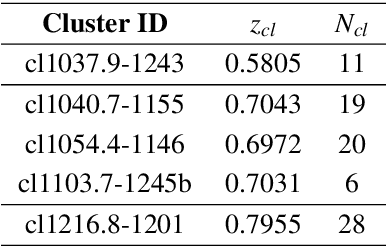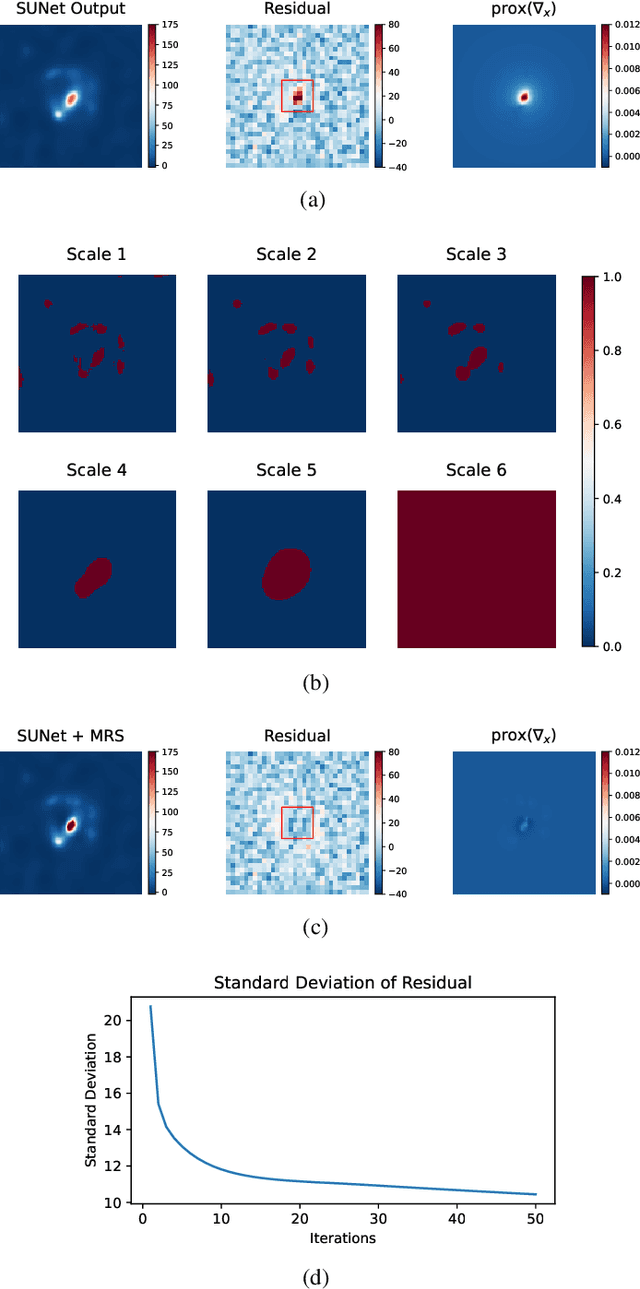Utsav Akhaury
Joint multi-band deconvolution for $Euclid$ and $Vera$ $C.$ $Rubin$ images
Feb 24, 2025Abstract:With the advent of surveys like $Euclid$ and $Vera$ $C.$ $Rubin$, astrophysicists will have access to both deep, high-resolution images, and multi-band images. However, these two conditions are not simultaneously available in any single dataset. It is therefore vital to devise image deconvolution algorithms that exploit the best of the two worlds and that can jointly analyze datasets spanning a range of resolutions and wavelengths. In this work, we introduce a novel multi-band deconvolution technique aimed at improving the resolution of ground-based astronomical images by leveraging higher-resolution space-based observations. The method capitalizes on the fortunate fact that the $Vera$ $C.$ $Rubin$ $r$-, $i$-, and $z$-bands lie within the $Euclid$ $VIS$ band. The algorithm jointly deconvolves all the data to turn the $r$-, $i$-, and $z$-band $Vera$ $C.$ $Rubin$ images to the resolution of $Euclid$ by enabling us to leverage the correlations between the different bands. We also investigate the performance of deep learning-based denoising with DRUNet to further improve the results. We illustrate the effectiveness of our method in terms of resolution and morphology recovery, flux preservation, and generalization to different noise levels. This approach extends beyond the specific $Euclid$-$Rubin$ combination, offering a versatile solution to improve the resolution of ground-based images in multiple photometric bands by jointly using any space-based images with overlapping filters.
Ground-based Image Deconvolution with Swin Transformer UNet
May 13, 2024



Abstract:As ground-based all-sky astronomical surveys will gather millions of images in the coming years, a critical requirement emerges for the development of fast deconvolution algorithms capable of efficiently improving the spatial resolution of these images. By successfully recovering clean and high-resolution images from these surveys, our objective is to help deepen our understanding of galaxy formation and evolution through accurate photometric measurements. We introduce a two-step deconvolution framework using a Swin Transformer architecture. Our study reveals that the deep learning-based solution introduces a bias, constraining the scope of scientific analysis. To address this limitation, we propose a novel third step relying on the active coefficients in the sparsity wavelet framework. By conducting a performance comparison between our deep learning-based method and Firedec, a classical deconvolution algorithm, we analyze a subset of the EDisCS cluster samples. We demonstrate the advantage of our method in terms of resolution recovery, generalization to different noise properties, and computational efficiency. Not only does the analysis of this cluster sample assess the efficiency of our method, but it also enables us to quantify the number of clumps within these galaxies in relation to their disc colour. This robust technique holds promise for identifying structures in the distant universe from ground-based images.
Deep Learning-based galaxy image deconvolution
Nov 17, 2022Abstract:With the onset of large-scale astronomical surveys capturing millions of images, there is an increasing need to develop fast and accurate deconvolution algorithms that generalize well to different images. A powerful and accessible deconvolution method would allow for the reconstruction of a cleaner estimation of the sky. The deconvolved images would be helpful to perform photometric measurements to help make progress in the fields of galaxy formation and evolution. We propose a new deconvolution method based on the Learnlet transform. Eventually, we investigate and compare the performance of different Unet architectures and Learnlet for image deconvolution in the astrophysical domain by following a two-step approach: a Tikhonov deconvolution with a closed-form solution, followed by post-processing with a neural network. To generate our training dataset, we extract HST cutouts from the CANDELS survey in the F606W filter (V-band) and corrupt these images to simulate their blurred-noisy versions. Our numerical results based on these simulations show a detailed comparison between the considered methods for different noise levels.
Machine Learning Based Forward Solver: An Automatic Framework in gprMax
Nov 23, 2021



Abstract:General full-wave electromagnetic solvers, such as those utilizing the finite-difference time-domain (FDTD) method, are computationally demanding for simulating practical GPR problems. We explore the performance of a near-real-time, forward modeling approach for GPR that is based on a machine learning (ML) architecture. To ease the process, we have developed a framework that is capable of generating these ML-based forward solvers automatically. The framework uses an innovative training method that combines a predictive dimensionality reduction technique and a large data set of modeled GPR responses from our FDTD simulation software, gprMax. The forward solver is parameterized for a specific GPR application, but the framework can be extended in a straightforward manner to different electromagnetic problems.
 Add to Chrome
Add to Chrome Add to Firefox
Add to Firefox Add to Edge
Add to Edge